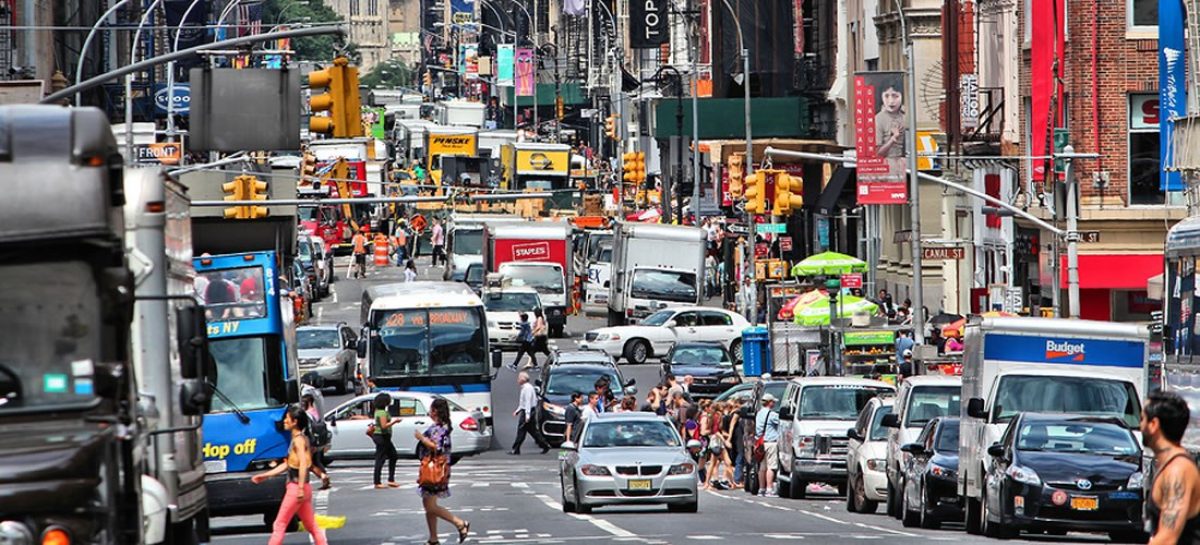In our 2016 Partner Perspective we identified a number of construction trends that are reshaping New York City. Last month, we introduced an article series that takes a closer look at the trends we identified. In this article we explore how the predicted population growth in New York City will impact future construction and daily lives of NYC residents.
New York City is the most populous and densely populated city in the country—a fact that is often apparent on its subways during rush hour, as crowds of people squeeze on or let a train pass by in the hopes that they can squeeze into the next one. And the sad news is—if recent trends hold up, the crowding will get worse.
In 2010, demographers predicted New York City would hit 8.5 million by 2020. The city hit reached this in 2015, five years ahead of schedule. A surge in growth buoyed by a resurgent economy, and a growing trend of urbanization in the United States are to blame. The city already feels filled to the brim and the expectation is that the trend will continue with more people continuing to move to the city.
Overcrowding is causing the cost of housing to skyrocket. The city must either build more buildings to accommodate all of the new people, or they must find a way to fit them all in the amount of space available. Both solutions have drawbacks. Realistically, in order to fit everyone, the city will have to do both Population densification is here to stay.
Besides crowded subways, increased density has other adverse effects. As more people move to the city, competition increases for desirable spaces. And as prices accordingly rise, lower income residents are being pushed out of their neighborhoods. Teachers, firemen and police to name a few often cannot afford to live in the communities they serve. This trend, while already happening, was the rallying cry of Bill de Blasio’s mayoral campaign in 2013. His much-vaunted “Housing New York” program aims to preserve or create 200,000 affordable housing units in the city.
One of the ways de Blasio is going about this is by creating area-specific zoning resolutions that allow for increased Floor Area Ratio (FAR) so builders can build taller buildings; the tradeoff being that affordable dwellings be included in the construction. The mayor’s plan has not been met with open arms by all residents. Local residents, especially in eastern Manhattan fear that the construction of newer, larger buildings (even with an affordable housing component) will turn the neighborhood into yet another outpost of gentrification which in turn will increase housing costs. Despite protests from residents, the City Planning Commissioner voted 12-1 in favor rezoning for super tall units. In the next few years we will learn if the plan is a cause of more problems or if it does make housing more affordable.
The problem is not limited to those individual residents being displaced, though. It affects the City’s economy on a macro level, too. New York City is a high-productivity area—a worker can create goods and services on a greater scale and more efficiently than in an area with less infrastructure and access to other skilled professionals. But if businesses and individuals cannot afford to relocate to New York City because the housing market (in particular) prices them out, the city loses out on all of the additional potential. Paul Krugman, a frequent NY Times contributor, recently commented during a speech with Mayor de Blasio, “What you see,” he said, “is that there’s a peculiar and fundamentally dysfunctional dynamic, which is the population doesn’t flow from low-productivity to high-productivity parts of the country – it’s the reverse.” That the reverse is happening may be hard to believe, given NYC’s expanding numbers. But the real loss is the amount of talent that remains outside the city —stopped from fully capitalizing on all New York City could offer because they simply can’t afford to live in New York.
There’s no easy solution to the problem—but there are some noteworthy attempts. Developers have been experimenting with “micro units” which qualifies as any room less than 400 square feet. One of the first buildings to offer these micro units is Carmel Place on 335 East 27th Street. For the construction on Carmel Place to take place, developers had to obtain a waiver to a zoning ordinances law created in 1987 which requires NYC apartments to be a minimum of 400 square feet. Carmel Place will feature 55 micro-units ranging from 265 to 360 square feet. To be sure, that’s not a lot of room to move around, but for singles, perhaps enough. If future developments are allowed to proceed, it will certainly impact the future of construction and the effect of increased densification on our daily lives.
If you have any questions, please contact Milrose Consultants.








